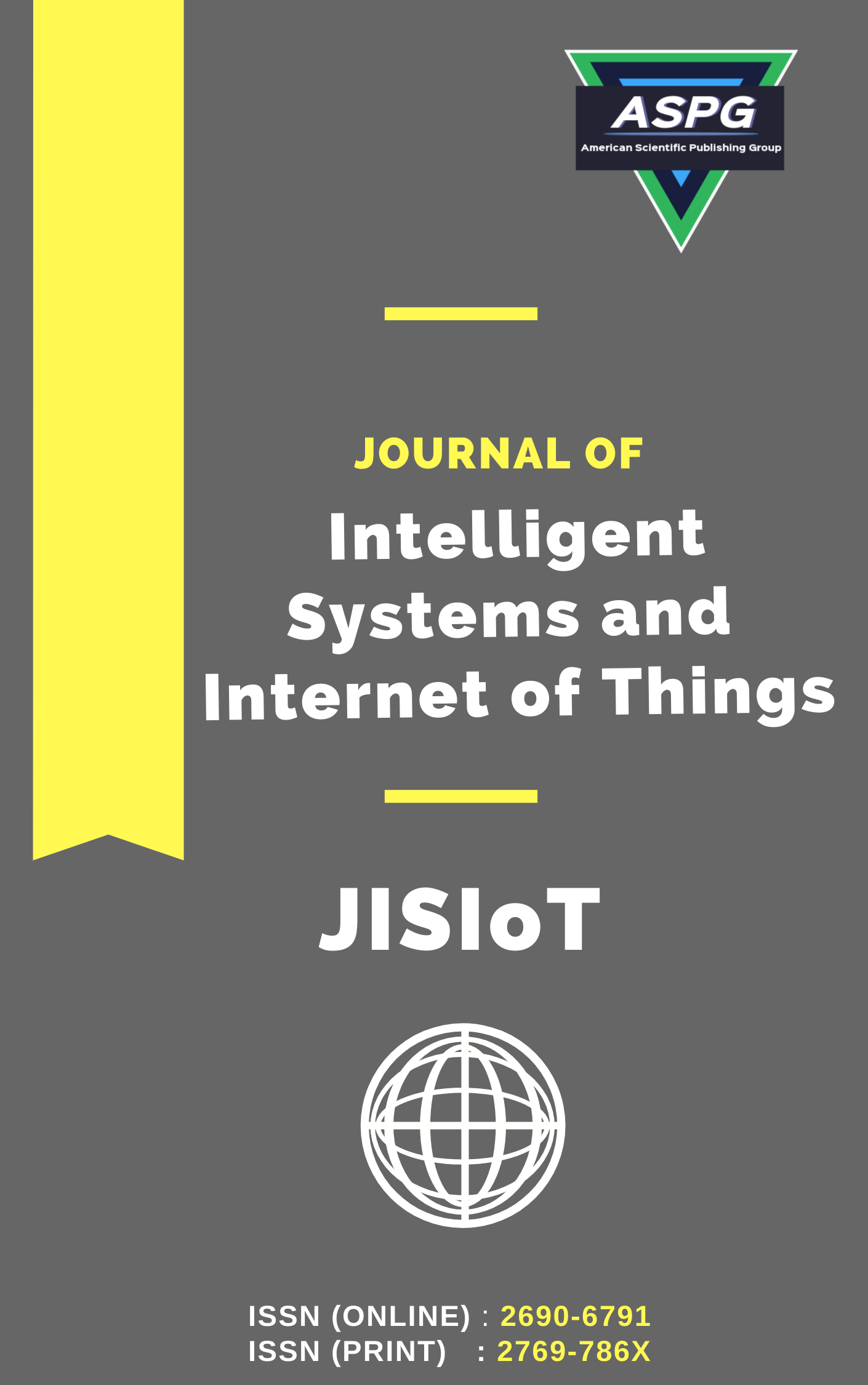

Volume 16 , Issue 2 , PP: 236-245, 2025 | Cite this article as | XML | Html | PDF | Full Length Article
Firas Mohammed Khalaf 1 * , Ali Makki Sagheer 2
Doi: https://doi.org/10.54216/JISIoT.160217
Data security, privacy, sensitivity, and integrity are major concerns when using cloud-based storage solutions. In this paper, we propose a hybrid encryption model that has been integrated with blockchain technology to secure data storage in the cloud. The proposed model facilitates data encryption using a symmetric cryptography algorithm for efficient large data encryption while ensuring the encryption key can only be exchanged using asymmetric cryptography. This model utilizes the power of blockchain to manage metadata securely and associated encryption keys to ensure that records are tamper-proof, removing the need for third parties to be trusted. The security, key management, and data integrity of the proposed model are better than traditional cloud storage and existing blockchain-based approaches. The performance evaluation suggests that the model achieves a balance between security and cost efficiency, while moderate transaction speed will be witnessed owing to blockchain operations. Our proposed work aims to provide a scalable, fast, reliable, and decentralized architecture-based solution to address the challenges of cloud data security.
Hybrid Encryption , Blockchain Technology , Cloud Data Security , Secure Cloud Storage
[1] N. Subramanian and A. Jeyaraj, “Recent security challenges in cloud computing,” Computers & Electrical Engineering, vol. 71, pp. 28–42, Oct. 2018, doi: 10.1016/J.COMPELECENG.2018.06.006.
[2] H. Tabrizchi and M. K. Rafsanjani, “A survey on security challenges in cloud computing: issues, threats, and solutions,” Journal of Supercomputing, vol. 76, no. 12, pp. 9493–9532, Dec. 2020, doi: 10.1007/S11227-020-03213-1.
[3] Z. Balani and H. Varol, “Cloud Computing Security Challenges and Threats,” in 8th International Symposium on Digital Forensics and Security (ISDFS), Jun. 2020, doi: 10.1109/ISDFS49300.2020.9116266.
[4] A. Orobosade, T. Aderonke, A. Boniface, and A. J., “Cloud Application Security using Hybrid Encryption,” Communications on Applied Electronics, vol. 7, no. 33, pp. 25–31, May 2020, doi: 10.5120/CAE2020652866.
[5] V. Agarwal, A. K. Kaushal, and L. Chouhan, “A Survey on Cloud Computing Security Issues and Cryptographic Techniques,” Lecture Notes in Networks and Systems, vol. 100, pp. 119–134, 2020, doi: 10.1007/978-981-15-2071-6_10.
[6] I. Tyan, A. Guevara-Plaza, M. I. Yagüe, J. A. Quintela, and J. G. Antunes, “The Benefits of Blockchain Technology for Medical Tourism,” Sustainability, vol. 13, no. 22, p. 12448, Nov. 2021, doi: 10.3390/SU132212448.
[7] S. Davidson, P. De Filippi, and J. Potts, “Disrupting Governance: The New Institutional Economics of Distributed Ledger Technology,” SSRN Electronic Journal, Jul. 2016, doi: 10.2139/SSRN.2811995.
[8] K. Wüst and A. Gervais, “Do you need a blockchain?,” in Proceedings of the 2018 Crypto Valley Conference on Blockchain Technology (CVCBT), Nov. 2018, pp. 45–54, doi: 10.1109/CVCBT.2018.00011.
[9] W. Li et al., “Blockchain-based trust management in cloud computing systems: a taxonomy, review and future directions,” Journal of Cloud Computing, vol. 10, no. 1, pp. 1–34, Dec. 2021, doi: 10.1186/S13677-021-00247-5.
[10] B. Singhal, G. Dhameja, and P. S. Panda, Beginning Blockchain. Apress, 2018, doi: 10.1007/978-1-4842-3444-0.
[11] M. Stamp, Information Security: Principles and Practice. John Wiley & Sons, 2011.
[12] J. Nechvatal et al., “Report on the Development of the Advanced Encryption Standard (AES),” J. Res. Natl. Inst. Stand. Technol., vol. 106, no. 3, p. 511, 2001, doi: 10.6028/JRES.106.023.
[13] W. Diffie and M. E. Hellman, “New Directions in Cryptography,” IEEE Transactions on Information Theory, vol. 22, no. 6, pp. 644–654, 1976, doi: 10.1109/TIT.1976.1055638.
[14] M. S. Uddin, A. Stranieri, and K. S. Balasubramanian, “Blockchain-Based Secure Healthcare Data Management System,” IEEE Access, vol. 9, pp. 103072–103084, 2021, doi: 10.1109/ACCESS.2021.3098545.
[15] J. Zhang, Y. Yuan, and X. Liu, “Enhancing Cybersecurity in IoT Networks Using Machine Learning and Blockchain,” IEEE Transactions on Network and Service Management, vol. 18, no. 4, pp. 4507–4520, Dec. 2021, doi: 10.1109/TNSM.2021.3115012.
[16] R. Imam, Q. M. Areeb, A. Alturki, and F. Anwer, “Systematic and Critical Review of RSA Based Public Key Cryptographic Schemes: Past and Present Status,” IEEE Access, vol. 9, pp. 155949–155976, 2021, doi: 10.1109/ACCESS.2021.3129224.
[17] M. Q. Jawad and M. Yousif, “Improving Video Streaming Quality and Network Efficiency through Data Distribution Services,” IEEE Transactions on Broadcasting, vol. 69, no. 1, pp. 97–107, 2023, doi: 10.1109/TBC.2023.3271947.
[18] M. A. Darwish et al., “Decentralizing Privacy Implementation at Cloud Storage Using Blockchain-Based Hybrid Algorithm,” Arabian Journal for Science and Engineering, vol. 45, no. 4, pp. 3369–3378, Apr. 2020, doi: 10.1007/S13369-020-04394-W.
[19] S. M. U. Sankar et al., “A Secure Third-Party Auditing Scheme Based on Blockchain Technology in Cloud Storage,” International Journal of Engineering Trends and Technology, vol. 71, no. 3, pp. 23–32, Apr. 2023, doi: 10.14445/22315381/IJETT-V71I3P204.
[20] S. K. Geetha et al., “Blockchain based Mechanism for Cloud Security,” in 2nd International Conference on Sustainable Computing and Data Communication Systems (ICSCDS), 2023, pp. 1287–1295, doi: 10.1109/ICSCDS56580.2023.10105053.
[21] M. A. Z. B. Idrus et al., “Blockchain-based Security for Cloud Data Storage,” in 9th IEEE International Conference on Smart Instrumentation, Measurement and Applications (ICSIMA), 2023, pp. 73–77, doi: 10.1109/ICSIMA59853.2023.10373457.
[22] M. Y. Shakor et al., “Dynamic AES Encryption and Blockchain Key Management: A Novel Solution for Cloud Data Security,” IEEE Access, vol. 12, pp. 26334–26343, 2024, doi: 10.1109/ACCESS.2024.3351119.
[23] F. Chen, “Enhancing Cloud Computing Security with Blockchain: A Hybrid Approach to Data Privacy and Integrity,” Journal of Computing and Electronic Information Management, vol. 14, no. 2, pp. 75–79, Sep. 2024, doi: 10.54097/7QTZWC77.